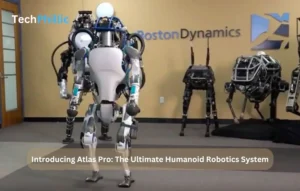Have you ever stopped to consider the vast amount of digital information we generate daily? From photos and videos capturing life’s precious moments to documents and files fueling the global economy, our data needs a place to call home. Enter the unsung heroes of the digital age: storage media.
These physical materials, often overshadowed by their flashier counterparts like computers and smartphones, play a crucial role in safeguarding our digital footprints. But their story is far more fascinating than just storing “ones and zeros”. This blog post delves into the diverse landscape of storage media, exploring their evolution, significance, and exciting future, all while weaving in the human connection and ethical considerations we must address.
From Cave Walls to the Cloud: A Brief History of Data Storage
Long before the internet existed, humans craved ways to preserve knowledge and stories. Cave paintings, clay tablets, and papyrus scrolls served as the earliest storage media, etching information onto durable surfaces that could withstand the passage of time.
As technology marched forward, so did our methods of information storage. Magnetic tapes, punch cards, and floppy disks (remember those?) each played their part, paving the way for the diverse media we rely on today.
Unveiling the Diverse Landscape of Storage Media
Today’s storage media landscape is a vibrant tapestry woven from various technologies, each with its unique strengths and weaknesses. Let’s take a closer look at some of the key players:
A. Magnetic Memories: Still Spinning Strong
Hard disk drives (HDDs) have been the workhorses of data storage for decades. Imagine a spinning platter coated with a magnetic material, where data is encoded as tiny magnetized regions. These “spinning rust” wonders offer massive storage capacity at affordable prices, making them ideal for storing large files like movies and music. However, their speed can be limiting, and they’re more susceptible to physical damage compared to their solid-state counterparts.
Enter the solid-state drive (SSD) – the younger, faster sibling of the HDD. Instead of spinning platters, SSDs use interconnected flash memory chips to store data. This translates to lightning-fast read and write speeds, making them perfect for tasks like running software and editing videos. But like anything in life, there’s a trade-off – SSDs typically come with smaller capacities and higher price tags compared to HDDs.
B. Optical Illusions: Shining a Light on Data
Remember the thrill of popping a CD into your computer and waiting for the familiar whirring sound? Compact discs (CDs), along with their successors, DVDs and Blu-rays, use lasers to read and write data encoded on microscopic pits and grooves. These storage media shine when it comes to portability and archival capability, making them ideal for storing backups, movies, and music collections. However, their data transfer speeds are slower than magnetic and solid-state counterparts, and they’re susceptible to scratches and damage.
C. Flash Forward: The Rise of Solid State
USB flash drives and memory cards embody the epitome of convenience when it comes to portable storage media. These tiny marvels utilize flash memory chips, similar to SSDs, to store data compactly and reliably. Their portability and durability make them perfect for carrying documents, photos, and music on the go. However, their storage capacity tends to be lower than other options, and their cost can increase significantly for larger sizes.
D. The Solid-State Revolution: Emerging Technologies on the Horizon
Innovation in the world of storage media never sleeps. Technologies like 3D XPoint memory and DNA storage promise to push the boundaries of speed, density, and longevity. Imagine storing terabytes of data on a chip the size of your fingernail, or using strands of DNA to archive information for centuries! While these technologies are still in their early stages, they offer a glimpse into the exciting future of data storage.

Also Read: Slash Your Electricity Bill & Go Green: The Complete Guide to Solar-Powered Fridges
Beyond Technology: The Human Connection and Responsibility in Storage Media
From Knowledge Preservation to Personal Memories:
Storage media are more than just technological marvels; they hold the threads of our collective and individual journeys. Imagine historical archives preserved on fragile magnetic tapes, family photos tucked away on dusty floppy disks, or the cherished music collection carefully curated on CDs. These storage media act as time capsules, safeguarding memories and knowledge that transcend generations.
However, the flip side of this coin is the ever-present threat of data loss. A corrupted hard drive, a misplaced flash drive, or a natural disaster can wipe away these precious memories forever. This emphasizes the importance of responsible data management, including regular backups and exploring diverse storage media options to ensure long-term preservation.
Environmental Impact and Sustainable Choices:
Our reliance on storage media comes with an environmental cost. Discarded electronics, often referred to as e-waste, pose a significant threat to landfills and pollute our environment. Choosing durable and long-lasting media, adopting responsible e-waste disposal practices, and supporting initiatives that develop eco-friendly storage solutions are crucial steps towards minimizing our digital footprint.
Ethical Considerations in the Digital Age:
In an era of data breaches and privacy concerns, the ethical implications of storage media cannot be ignored. The vast amount of personal information we store raises questions about data security, ownership, and access. It’s essential to be aware of these concerns, utilize strong encryption measures where possible, and make informed choices about the data we share and where we store it.
Looking Ahead: The Future of Storage
The future of storage media is brimming with exciting possibilities. Imagine holographic storage capable of storing exabytes of data on a single disk, or quantum computing revolutionizing data processing and retrieval. These advancements promise to change the way we store and access information, but they also come with their own set of ethical and societal considerations.
Conclusion: Be Mindful, Be Responsible, Appreciate the Heroes
As we navigate the ever-evolving landscape of storage media, it’s crucial to remember the human stories woven into the technology. Each byte of data represents memories, knowledge, and experiences that deserve to be safeguarded. Choose your storage media wisely, prioritize responsible data management, and appreciate the unsung heroes behind the scenes – the physical materials that hold the key to our digital lives.
Remember, the power lies in your hands. Be mindful of your choices, embrace the responsibility that comes with storing your digital footprint, and let’s create a future where storage media empowers us to preserve our past, shape our present, and unlock the potential of our future.







